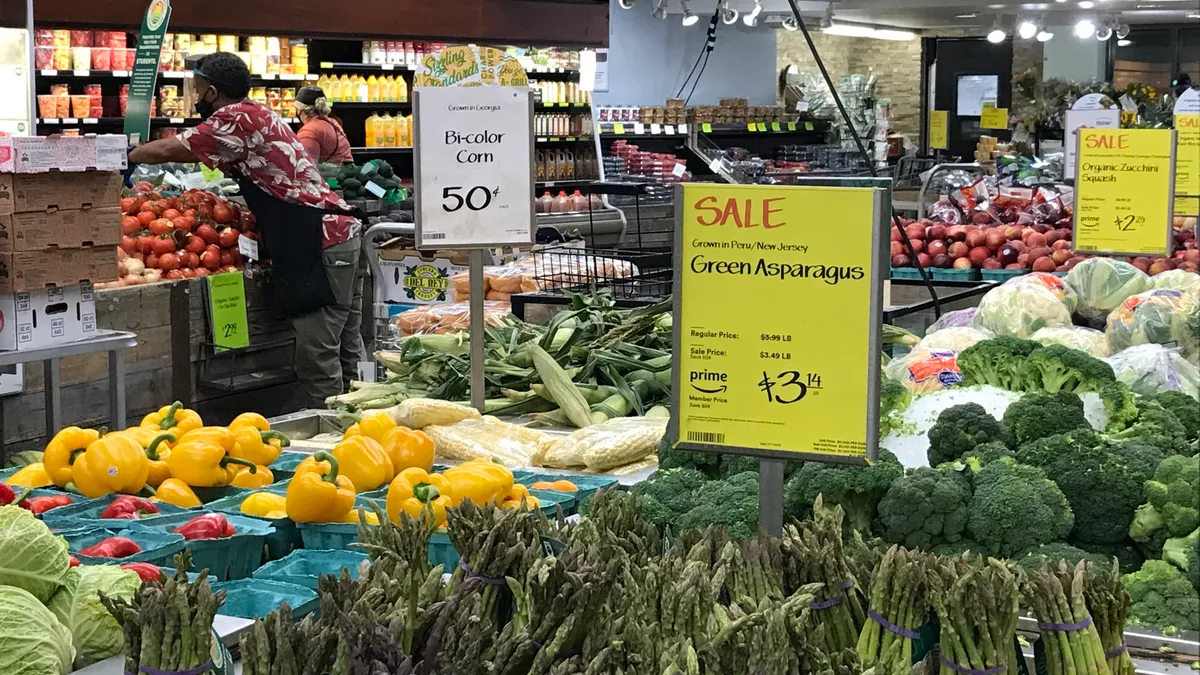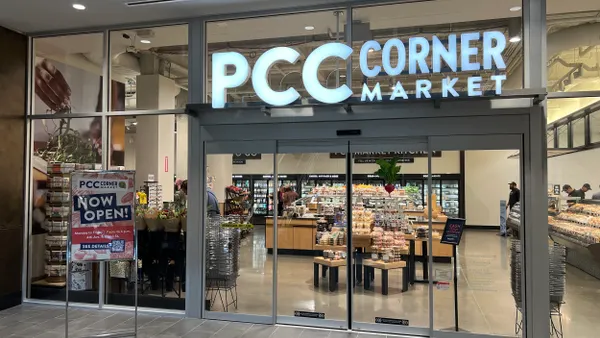Dive Brief:
- Price is now a top factor for consumers in the produce aisle as inflation strains shoppers' wallets, according to the latest Power of Produce report from the Food Industry Association (FMI).
- Consumers have long focused on appearance and quality when buying fresh produce, but the trade group found price is now on par with, and in some cases has surpassed, those factors. The report said 25% of surveyed shoppers ranked price as the No. 1 decision-maker ahead of appearance, health benefits and ripeness.
- Shoppers’ heightened focus on price amid record-high inflation also significantly impacted the year-over-year sales gains fresh produce recorded in 2021, FMI found.
Dive Insight:
The produce aisle has long been a trip driver for grocers, but rising inflation is altering shopping habits in the department, and that could impact sales throughout the store.
According to FMI's report, 92% of shoppers have changed their shopping habits as a result of noticing higher prices for fresh produce. The top ways they've responded include buying sale items (40%), focusing on shelf-life (33%) and buying less (31%). With inflation impacting fresh produce, frozen and canned fruits and vegetables have gained ground with consumers due to their comparatively lower prices, the report noted.
FMI's report, which used data from IRI, found that fresh produce sales hit $71 billion in 2021, but inflation drove its 3.3% increase in dollar sales year-over-year and volume sales were down 2%. Shopper engagement with fresh produce declined in terms of household penetration and trips last year, which impacted volume sales, FMI said.
Fruit, which has trailed vegetables in sales growth for several years, saw sales increase 6.1%, while vegetables grew only 0.5%, according to IRI data cited in the report. FMI said this was partially due to vegetables incurring less inflation (more than 4%) compared to fruit (more than 7%).
While price is now playing a bigger role in how consumers shop for fresh produce, FMI noted that appearance, health benefits and ripeness make up the rest of the category's "purchase decision tree," with different demographics weighting those factors differently. For example, shoppers who ranked price as their first or second factor often consider cost alongside appearance, while shoppers who ranked health benefits as a top factor tend to put more focus on production claims, FMI said.
Overall, fresh produce consumption is down, with 54% of people saying they ate it at least four days a week in 2021 compared to 66% in 2017.
"The biggest opportunity for fresh produce remains closing the gap with prior year consumption levels," the report stated. "The more often people shop, the more frequently they tend to consume fresh fruits and vegetables."
Promotions aren't as common in the produce aisle now, with 28.4% of fresh produce sold on promotion in 2021, down from 42.8% in 2019. But discounts and coupons are still huge draws to consumers, along with prices, FMI said. Forty percent of surveyed shoppers said they are influenced by sales promotions.












